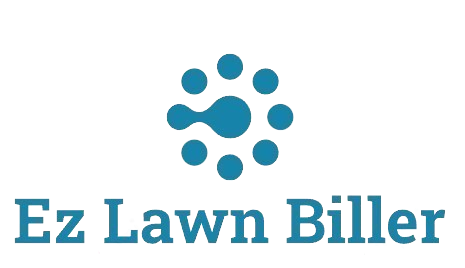Step-by-Step: How to Manage Schedules in Your Lawn Business
Managing schedules effectively is crucial for the success of any lawn care business. With the right scheduling tactics, you can improve efficiency, enhance client satisfaction, and ultimately boost profitability. This comprehensive guide will walk you through step-by-step methods to manage your schedules effectively, ensuring that your operations run smoothly and your customers are happy.
In the lawn care industry, time is money. Proper scheduling allows you to maximize the number of jobs completed each day, minimize downtime, and make the best use of your team’s skills. From mowing to fertilization, each service has specific time requirements, and managing these can be challenging without the right strategies. In this article, we will cover essential scheduling techniques, tools, and practices to streamline your lawn business operations. We will also explore how solutions like [Lawn Biller Software](https://ezlawnbiller.com/) can play a pivotal role in your scheduling efforts.
Understanding the Importance of Scheduling
Scheduling is more than just creating a calendar or to-do list; it’s about strategically planning your resources to meet customer demands and optimize workflow. A well-organized schedule can significantly reduce operational costs by minimizing wasted time and resources. Statistics show that businesses that effectively manage their schedules see a noticeable increase in productivity. For instance, lawn care businesses that implement a structured scheduling system can enhance their service delivery by up to 30%.
Consider the challenges faced by a lawn care business. When appointments are mismanaged, it can lead to customer dissatisfaction, delayed services, and even lost revenue. An efficient scheduling system helps avoid overlaps, ensures timely service deliveries, and enhances client trust. For companies in bustling areas like Los Angeles or Chicago, timely service is often a differentiating factor that can set you apart from competitors.
Step 1: Choose the Right Scheduling Tools
To efficiently manage your schedules, investing in the right tools is paramount. A lawn service software solution, like [Lawn Biller Software](https://ezlawnbiller.com/), can automate scheduling tasks, send reminders, and keep track of your service history. These applications integrate seamlessly into your daily operations, providing an organized digital space for managing your calendar.
Additionally, look for software that features a user-friendly interface, mobile access, and customizable options. The flexibility to manage schedules from anywhere can be a game-changer, especially for lawn care providers with multiple crews operating in different locations. Tools that allow real-time updates can help you adapt to unexpected changes, such as weather conditions that can alter your service times.
Step 2: Define Your Service Areas
Defining your service areas is critical in scheduling. This helps in planning the most efficient routes for your teams, reducing travel time between jobs. When you delineate service zones, you can allocate your resources more effectively. Depending on your business size, you may want to create zones based on geographical locations or the density of clients.
For example, if your lawn business operates in cities like Miami and Orlando, having designated teams for each city can improve service delivery times. This targeted approach allows you to assign jobs based on each team’s location, ensuring they can complete more jobs in a single day. The key is to analyze your current client base and anticipate future growth when establishing these service areas.
Step 3: Establish a Consistent Schedule
Consistency is vital in the lawn care business. Establishing a regular schedule for different services—like weekly mowing or monthly fertilization—allows clients to plan and expect your visits. This can create a sense of reliability and professionalism in your brand.
Moreover, automated reminders for both clients and staff can enhance this consistency. Using tools like [Lawn Biller Software](https://ezlawnbiller.com/) can help you set up automated notifications, ensuring that everyone stays informed about their appointments. This can help reduce no-shows and last-minute cancellations, which can disrupt your workflow.
Step 4: Prioritize Customer Communication
Effective communication plays a significant role in managing schedules. Keeping your clients informed about service timings, any changes, or delays is essential. This transparency builds trust and reinforces your commitment to customer service.
Implementing a communication strategy, such as sending out service reminders or updates via text or email, can enhance your client relationships. Solutions like [Lawn Biller Software](https://ezlawnbiller.com/) often include built-in communication features, making it easier for you to connect with your customers directly through the app.
Step 5: Monitor and Adjust Schedules Regularly
Once your scheduling system is in place, it’s important to regularly monitor its effectiveness. Keep an eye on how your schedule aligns with actual service delivery. If you find recurring overlaps or delays, it may be time to adjust the scheduling parameters or resource allocation.
Utilize reporting tools provided by your lawn service software to analyze performance metrics. Tracking factors such as job completion times and customer satisfaction will help you identify areas for improvement. For example, if certain routes consistently take longer than expected, you might consider re-evaluating your teams or adjusting service times accordingly.
Step 6: Leverage Technology for Efficiency
Technology can be a powerful ally in managing schedules effectively. By utilizing lawn service apps, you can streamline operations and enhance service delivery. These applications offer features such as GPS tracking, real-time updates, and digital invoicing, which are essential for a modern lawn care business.
Moreover, using a lawn company computer program can help you keep track of client history, preferences, and service records. This information can be invaluable for tailoring services to individual client needs, leading to higher satisfaction and possibly more referrals.
Step 7: Train Your Team
Even the best scheduling tools are only as good as the team using them. Regular training sessions can ensure that your staff understands the scheduling system and follows the established protocols effectively. Educating your technicians about the importance of timely service delivery and customer communication will foster a culture of professionalism.
Consider implementing a feedback loop where team members can voice their experiences regarding the scheduling process. Their insights may highlight potential improvements or adjustments that could enhance efficiency. Remember, a well-informed team will be more likely to adhere to the scheduling system and contribute to its success.
Step 8: Integrate Billing and Scheduling
Combining your billing and scheduling systems can provide significant administrative relief. Using integrated solutions like [Lawn Biller Software](https://ezlawnbiller.com/) allows you to synchronize service appointments with invoicing. This means that after a job is completed, an invoice can be automatically generated and sent to the client without any additional work from your end.
This integration reduces the risk of errors that can occur when manually tracking services and billing. Additionally, it improves your cash flow by ensuring that invoicing is timely and accurate, ultimately contributing to a more profitable business model. Make sure to leverage the features of your software to ensure seamless operations.
Conclusion
In conclusion, managing schedules in your lawn business is a multifaceted process that requires careful planning, effective tools, and strong communication. By following these steps—choosing the right tools, defining service areas, establishing a consistent schedule, prioritizing customer communication, regularly monitoring your system, leveraging technology, training your team, and integrating billing and scheduling—you can streamline operations and improve client satisfaction.
The significance of effective scheduling is clear: it not only enhances operational efficiency but also builds customer loyalty and trust in your services. As the lawn care industry continues to evolve, adopting modern scheduling methods will be crucial for staying competitive. Embrace these strategies and tools, like [Lawn Biller Software](https://ezlawnbiller.com/), to take your lawn care business to new heights.
Ready to streamline your scheduling and billing processes? Sign up for early access to EZ Lawn Biller today and experience the difference for yourself!




